It was distinctly grey and overcast on Saturday morning with a cold wind keeping temperatures on the wrong side of double digits. Hardly an auspicious start for a couple of hours at Radipole Lake but we quickly learnt that initial impressions can be deceptive. Walking down the reed lined paths we could hear numerous Cetti’s Warblers calling from all sides with even our conservative estimates of at least nine birds probably nowhere near their true number. As ever it seemed as though they were to remain elusive however until a streak of brown between bushes betrayed the presence of our first individual. It disappeared just as quickly but the floodgates had clearly been opened as we enjoyed some spectacular sightings throughout the rest of our stay. From birds flying straight towards me along the path to individuals perched just a couple of metres away, I think it’s fair to say that Cetti’s Warblers have never been quite so accommodating. Sadly I never did manage to get my camera on to one in time but what an experience producing genuine smiles all round.
Thankfully our next species was even happier to show itself off as we enjoyed our best ever views of a Bonaparte’s Gull. It was feeding almost continually at the back of the reserve in a manner not too dissimilar from Petrels with legs dangling and beak regularly dipping down to the waters surface presumably to catch insects. Only occasionally did it pause for rest with both behaviours allowing the key features of pink legs and black beak to clearly be discerned. It even landed next to a Black Headed Gull at one stage providing an ideal comparison opportunity between the two species though unfortunately it never came quite close enough to improve on these record shots. Even so what a bird and strangely the most common of the rare gulls in my repertoire with this being my fourth individual and second in a fortnight.
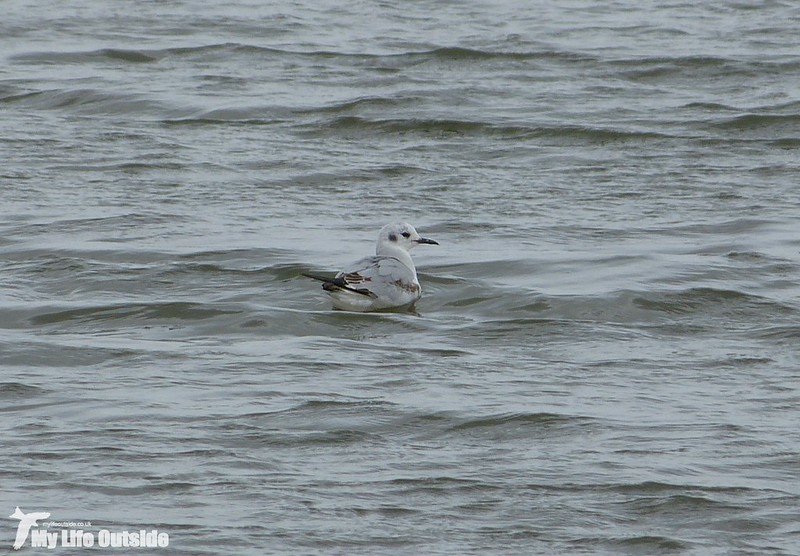
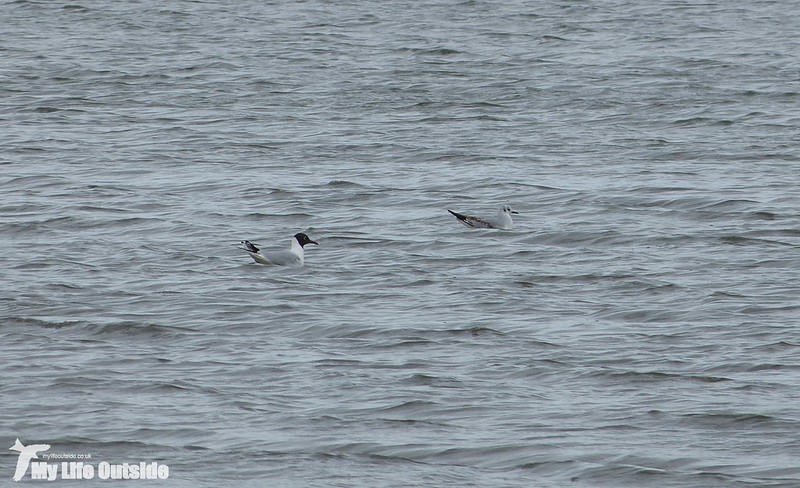
While watching the Bonaparte’s Emma spotted Radipole’s other celebrity guest, the long staying male Hooded Merganser which has been present for at least six years. The story of its discovery exhausted in a sluice drain is by now well known but debate still rages over whether it’s a true wild bird or an escape. I favour the former personally for no other reason than it being quite an attractive bird which otherwise would never have made it onto this blog. My reasoning may be as dubious as the bird itself but when it was as close as on this occasion you really can’t begrudge me a little indulgence.
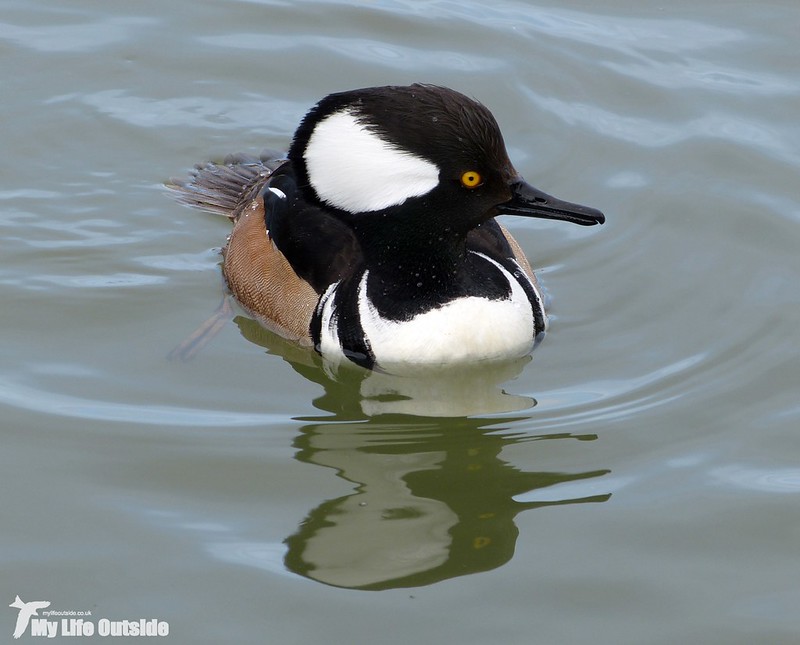
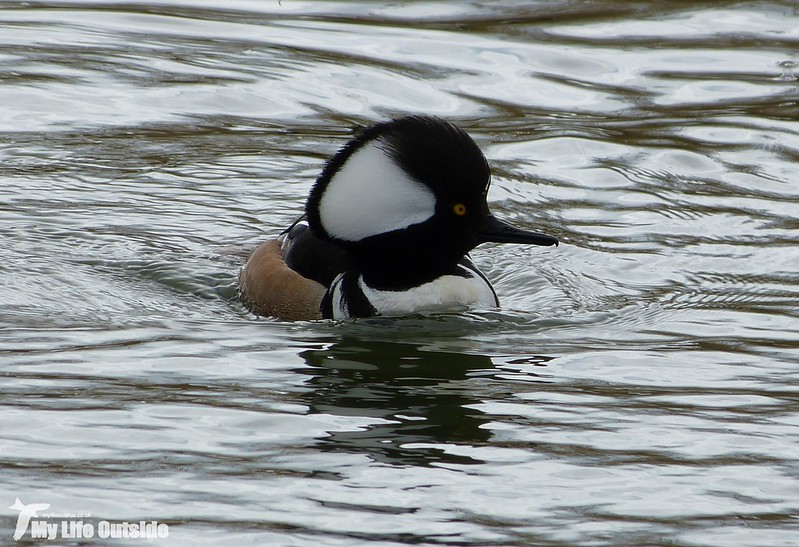
There was plenty more of interest on the reserve including a single Swallow (migration still slow even here), at least six calling Chiffchaffs, twelve Pochard, seventeen Gadwall, five Shoveller, forty plus Teal, four Grey Heron, one Little Egret and at least seven Great Crested Grebes. The latter still seemed some way off from putting on their famous courtship dance but nevertheless provided some nice photographic opportunities. Check out that head-wear!
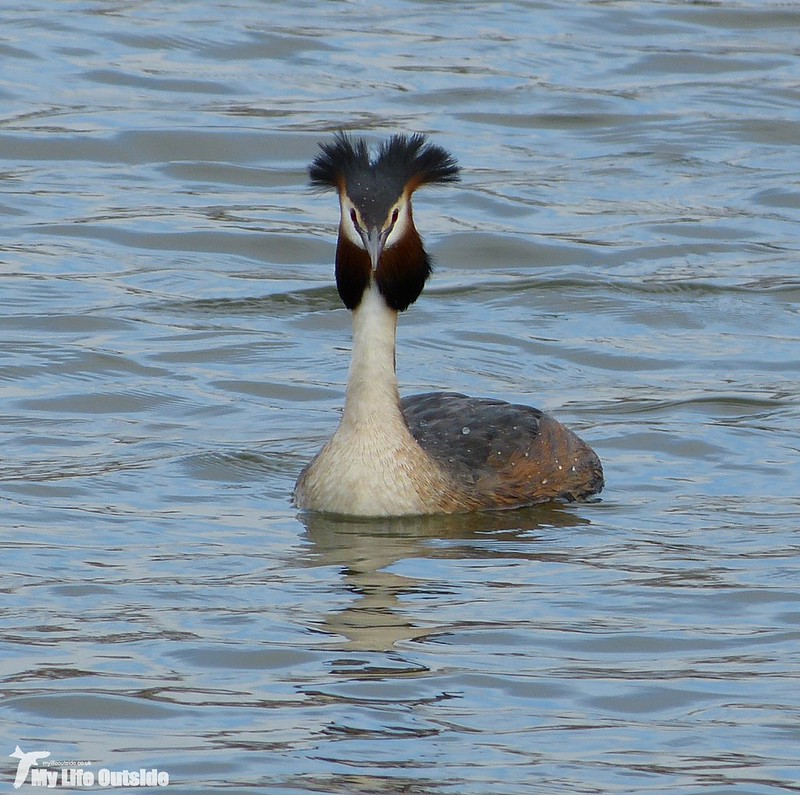
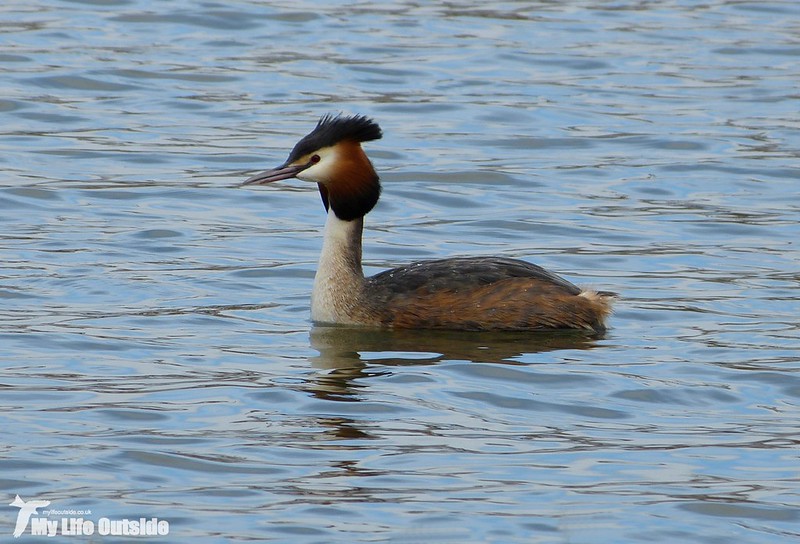
With time against us we only had chance for a quick trip out to the north hide but were rewarded with brief views of a Water Vole. Alerted by a characteristic ‘plop’ and ripples in the water it wasn’t long before the culprit reappeared as it climbed out onto the bank and vanished. Certainly an unexpected surprise and a very welcome one at that.
From Radipole it was on to Monkey World which, although an excellent day out supporting a very worthwhile cause, is not really the type of subject upon which this blog is based. Instead we pick up again late afternoon out at Portland Bill where, as you can probably guess by now, there was still a complete absence of spring migrants. Emma thought that she’d seen a small group of hirundines pass over but I missed them and they failed to put in a repeat showing. Instead we turned our attention out to sea where despite the grey conditions air clarity was absolutely superb. A distant Gannet showed up well but it was a close fly past from a Guillemot which really upped the anti. It was a nice sighting on its own but the very loud call it uttered was something else entirely. In fact it was so loud that we thought there must have been another bird down on the cliffs but after much searching we found nothing and were left in little doubt as to a Guillemot’s vocal prowess. There were at least eight more Guillemots on the move during our stay as well as three Oystercatchers and a flock of six Turnstones. What was most impressive though was the light with a distant break in the clouds allowing shafts of sun to infiltrate down to the murk below. A passing yacht provided a sense of scale and could that have been a Russian warship out on the horizon?
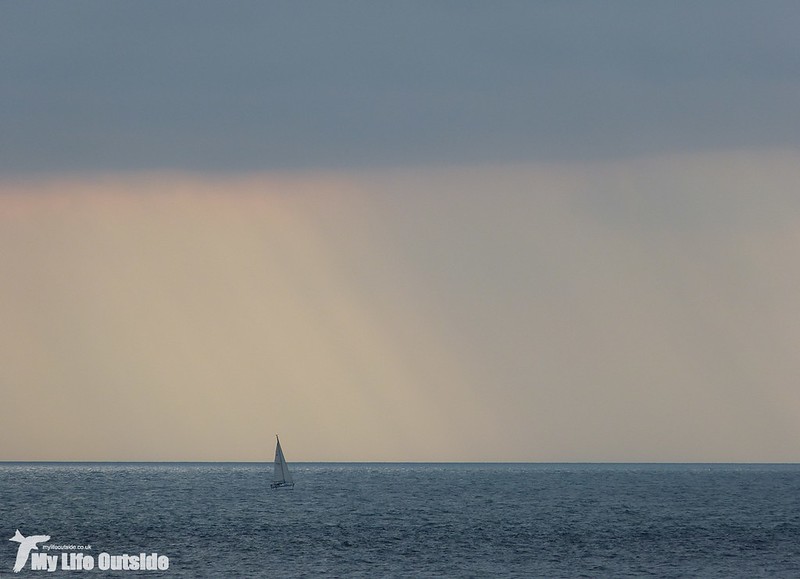
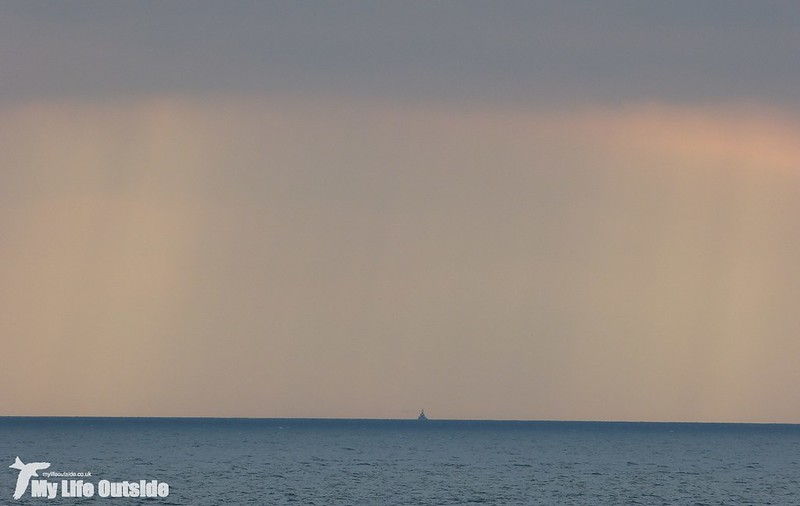
Wandering out beyond the lighthouse it was nice to reacquaint ourselves with this strange stretch of coastline whose wooden holiday sheds and boat lift cranes are unique as far as I am aware.

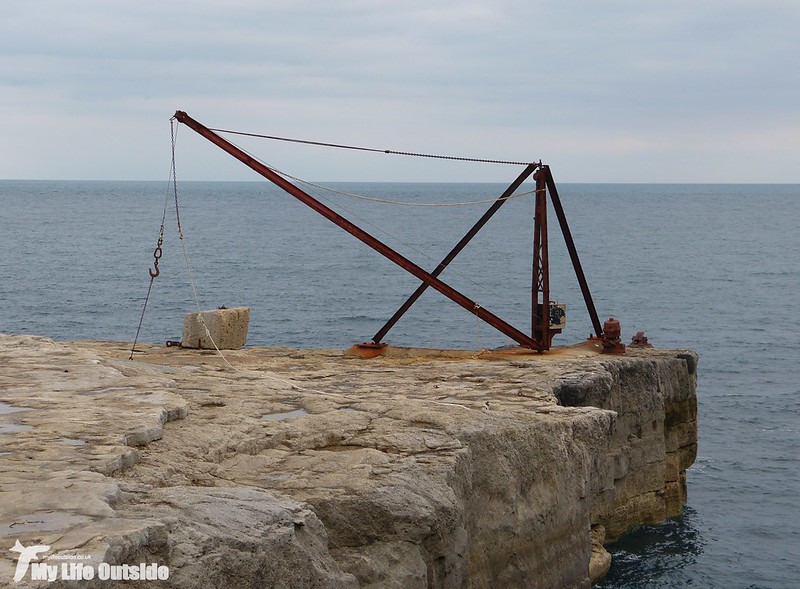
Back at the tent and after a teeth chattering sleep the night before more layers were definitely required if I was going to survive the coming hours of darkness. I’m happy to say that they did the job and I got to enjoy another night accompanied by the calls of Tawny Owls.



0 Comments